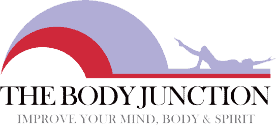Osteoporosis
Bones stop growing in length between the ages of 16 and 18, but bone density continues to increase slowly until a person’s late 20s. After the age of around 35, bone loss increases very gradually as part of the natural ageing process. This can lead to osteoporosis and an increased risk of broken bones, especially in later life.

Consequences of Osteoporosis
Osteoporosis is Only Painful if Fractures Have Occurred
Having osteoporosis does not automatically mean that your bones will break, it just means it is more likely and that you have a ‘greater risk of fracture’. Thin, fragile bones in themselves are not painful but the broken bones that can result can cause pain and other problems. Bones that break because of osteoporosis will still heal in the same way as they do in people who do not have osteoporosis.
Hip Fractures Hips broken as a result of osteoporosis occur most commonly in our late 70s or 80s, usually as a result of a fall and can affect all aspects of life. Full recovery is always possible but will often depend on how well someone is before the broken hip occurs. Getting back to being fully mobile and independent can be difficult and physiotherapy and social care services are often essential.
Breaking a hip when you are older can have a major impact on your independence. It can also create a real fear of falling among older people and can make them cautious of everyday activities.
Wrist Fractures Broken wrists can be the first indication that you have osteoporosis. They often occur in middle aged women who have put out their arm to break a fall. Healthy bones should be able to withstand a fall from standing height.
Other Fractures The humerus (upper arm), ribs or the pelvis may break if they are fragile but the wrist, spinal bones and hip are the most common places for fractures to happen. There are a number of less common types of osteoporosis and related conditions you may want to know about. The Osteoporosis Society website is very helpful or you can call them for more information.
Spinal Fractures (Vertabral fractures)
These fractures do not interfere with the spinal cord or result in paralysis or loss of sensation except in very unusual cases.

Although bones heal they do not return to their previous shape which can cause height loss or spinal curvature. If a number of wedge fractures occur together then the spine can tip forward causing an outward curve (kyphosis). If the bones are flattened, the trunk can be shortened in length causing loss of height. A fracture of one or more of the vertebrae can occur as the result of an awkward movement, like reaching up to get something from a kitchen cupboard or lifting heavy shopping bags. If fractures are numerous and severe they can lead to significant height loss and curvature causing shortness of breath, protruding stomach, indigestion problems and stress incontinence. This is because of a reduction in the available space for the internal organs.
These changes in posture can affect .Some people are distressed by changes in their shape and face difficulties with buying suitable clothes. However, not everyone is affected severely.
Who is at Risk
Gender. Women are at higher risk for osteoporosis than men. They have smaller bones and lose bone more rapidly than men do because of hormone changes that occur after menopause. Therefore, if you are a woman, you are at higher risk for osteoporosis.
Age. Because bones become thinner with age, the older you are, the greater your risk of osteoporosis.
Ethnicity. Caucasian and Asian women are at the highest risk for osteoporosis. This is mainly due to differences in bone mass and density compared with other ethnic groups. African-American and Hispanic women are also at risk, but less so.
Family History. Osteoporosis tends to run in families. If a family member has osteoporosis or breaks a bone, there is a greater chance that you will too.
History of Previous Fracture. People who have had a fracture after the age of 50 are at high risk of having another.
Risk Factors You Can Change
Other risk factors for osteoporosis can be changed. These include
Poor diet. Getting too little calcium over your lifetime can increase your risk for osteoporosis. Not getting enough vitamin D either from your diet, supplements, or sunlight can also increase your risk for osteoporosis. Vitamin D is important because it helps the body absorb Calcium. An overall diet adequate in protein and other vitamins and minerals is also essential for bone health.
Physical inactivity. Not exercising and being inactive or staying in bed for long periods can increase your risk of developing osteoporosis. Like muscles, bones become stronger with exercise. Gender. Women are at higher risk for osteoporosis than men. They have smaller bones and lose bone more rapidly than men do because of hormone changes that occur after menopause. Therefore, if you are a woman, you are at higher risk for osteoporosis.
Smoking. Smokers may absorb less calcium from their diets. In women it reduces the oestrogen levels in their body.
Medications. Some commonly used medicines can cause loss of bone mass. These include a type of steroid called glucocorticoids, which are used to control diseases such as arthritis and asthma; some anti seizure drugs; some medicines that treat endometriosis; and some cancer drugs. Using too much thyroid hormone for an underactive thyroid can also be a problem. Talk to your doctor about the medications you are taking and what you can do to protect your bones.
Low body weight. Women who are thin and small-boned are at greater risk for osteoporosis.








